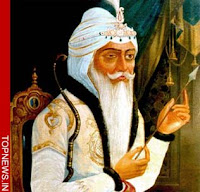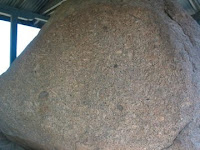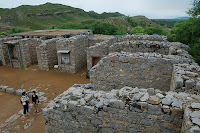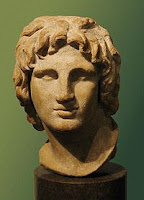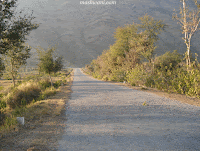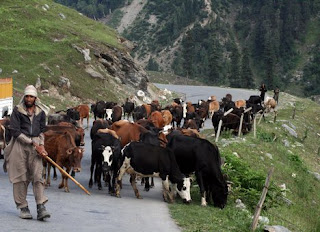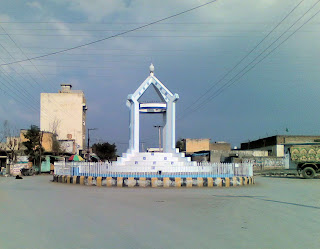ghazi52
PDF THINK TANK: ANALYST

- Joined
- Mar 21, 2007
- Messages
- 101,794
- Reaction score
- 106
- Country
- Location
Hari Singh Nalwa: Forgotten Voices From Hazara
June 22, 2019
Indus Heritage Club

Published in SikhNet on May 29, 2019 by Indus Heritage Club founder Jahandad Khan
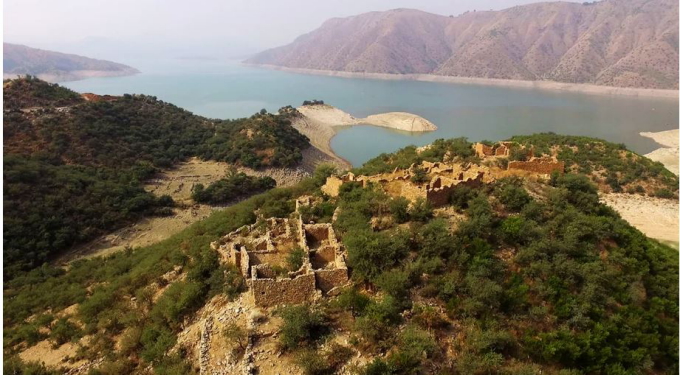
The most enduring landmark of Sardar Hari Singh Nalwa’s legacy in Pakistan is the country’s western border with Afghanistan, which also once represented the furthest limits of the Sikh empire. However, it was in the Hazara region in today’s Khyber Pakhtunkhwa province that Nalwa spent the bulk of his time on the frontier. Although local history sources contain a wealth of information on Hari Singh Nalwa’s fifteen-year tenure as Governor of Hazara, they have not received adequate scholarly attention. Foremost among these is the remarkable Tawarikh-e-Hazara. This book was penned in Persian in 1846 by Lala Mehtab Singh, who hailed from Musanagar (Kanpur) and joined Nalwa’s service in Hazara in 1824. As my ancestor Painda Khan Tanoli, of Amb-Darband in Hazara, was a contemporary and prominent rival of Nalwa, our elders also passed down rich oral and written traditions that shed light on the towering figure of nineteenth century South Asian history whose legacy on the frontier is often misunderstood. It is my earnest desire to see these local narratives from Hazara added to existing knowledge of Nalwa in an objective manner, before they fade away from memory and relevance.
The Political Economy of Conflict in Hazara
Hazara occupied a strategically important position at the beginning of the early nineteenth century, as the Durrani Afghans crossed the Indus and used routes through Hazara to access the wealth of Kashmir. Therefore, control of Hazara became increasingly important to Maharaja Ranjit Singh’s Lahore Durbar as it attempted to take control of Kashmir away from the Durranis. This was bad news to the native tribes of the region who were used to maintaining their political autonomy. Both the Sikhs and Durranis experienced turbulence with the locals. In 1817, my ancestor Nawab Khan Tanoli was killed by Azim Khan Durrani, the Afghan Governor of Kashmir, for challenging Durrani authority in the region (1). Around the same time, Southern Hazara under the leadership of Muhammad Khan Tareen rebelled against growing Sikh control. Muhammad Khan Tareen was a distant ancestor of Pakistan’s first military dictator, General Ayub Khan, and a powerful chief who had formerly collected taxes from the region and paid them to the Sikh Empire’s agents at Attock Fort. The cause for the rebellion was an increase in annual tax demands from 5,000 to 25,000 Rupees (2).
To alleviate the resistance against the Lahore Durbar, Ranjit Singh’s crafty mother in law Mai Sada Kaur visited Hazara in 1818 with Sher Singh and a military contingent of 300 men from Lahore headed by Illahi Baksh (3). They built a fort at Tarbela in Hazara; Mai Sada Kaur adopted Muhammad Khan Tareen as her son and Maharaja Ranjit Singh later convinced him to accept a jagir of Rs. 20,000 to maintain peace in the region (4). Despite the efforts towards reconciliation with Hazarawal political elites, several notable Sikh officers like Makhan Singh, Diwan Ram Diyal and Amar Singh Majithia fell at the hands of local tribal chiefs who resented their decreasing autonomy (5).
The historian Hari Ram Gupta crudely assessed that conflict in Hazara was driven by “the religious zeal and bigotry” of the natives (who he incorrectly identifies as Yusufzai Pashtuns) (6). However, the above chain of events identifies excessive taxation and loss of political autonomy to both Durranis and Sikhs as the realistic drivers of conflict.
Nalwa’s Military Campaign in Hazara
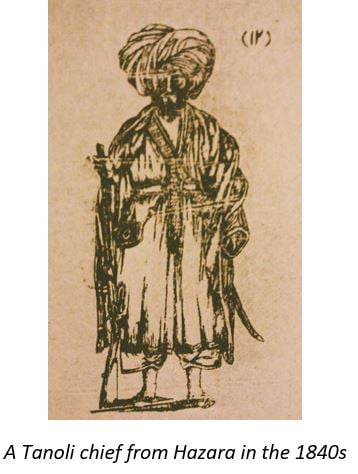
Maharaja Ranjit Singh appointed Nalwa the Jagirdar-Governor of Hazara in 1822 following the latter’s decisive victory in an unplanned battle where the odds were heavily stacked against Nalwa. In 1821, Nalwa was rushing from Kashmir to Mankera when his forces were intercepted in Hazara. A large body of Jadun tribesmen had blocked the narrow pathway at Mangal, on the outskirts of modern-day Abbottabad, and demanded Pashmina shawls in return for right for passage. Hari Singh Nalwa sent Najeebullah Khan Swati and Lala Raj Kunwar to negotiate with the tribesmen on his behalf three times (7). After three failed attempts through the local intermediaries, Nalwa took the fort at Mangal by storm. Local records mention that the Sikh forces that scaled the walls of the Mangal Fort at dawn were headed by an Iqbal Singh who displayed exemplary courage. The defeated tribesmen sent delegations of local Hindus and Sikhs from Nawanshehr and Dhamtor in Hazara to parley with Nalwa on their behalf. Nalwa permitted the Jaduns to resettle in their captured territory on the condition that each house in Nawanshehr, Dhamtor and Rajoyya pay five and a half rupees as fines for the inconvenience caused (8).

On becoming the Governor of Hazara in 1822, Nalwa built the Harkishangarh Fort a mile east of the city of Haripur, at a strategic location pointed out him by his local Muslim ally Muqaddam Musharraf who was from the Gujjar tribe (9). This would remain the Lahore Durbar’s largest fort in Hazara. However, it would take Nalwa two years to further cement his authority in the region. A series of toughly contested battles took place at Srikot, a mountain retreat of the Mashwani tribe that had become a seat of resistance for chiefs from around Hazara who fell out of favour with the Durbar. In 1824, Maharaja Ranjit Singh himself participated in the Hazara campaign when Nalwa was seriously wounded while attempting to take Srikot from a confederation of local tribes (10).
Control of Hazara was firmly established in 1824 when, on Nalwa’s local ally Muqaddam Musharraf’s advice, the following chiefs were apprehended and blown away from cannons following a battle at Srikot: Bostan Khan Tareen of Dervesh, Sher Muhammad Khan of Saraye Saleh, Saleh Muhammad Mashwani, Saleem Shah Mashwani, Jalal Khan Dilazak of Saraye Saleh and Sheikh Jadun of Rajoya. Srikot was garrisoned by the Sikh empire and the Mashwani tribe was driven out of their mountain range for two years (11). The Mashwanis were only allowed to return when elders of the tribe promised Nalwa that they would not cause further trouble to the Lahore Durbar (12).
After 1824, my ancestor Painda Khan Tanoli of Amb-Darband was the only chief left to continue the resistance in Hazara – a point to note is that he was at war not just with Nalwa but also simultaneously with the Afghan Durranis and Syed Ahmed Barelvi. This explains why Edward Conolly referred to Painda Khan as a “a sort of wild man, at war with all around him,” (13) who would cross the river Indus with his tribal army on inflated goat skins to ambush garrisons built by the regional powers in his native lands. Nalwa was aware that Painda Khan’s father, who was put to death by the Afghan Governor of Kashmir, had as his dying wish made his son swear an oath never to trust an outside ruler. Perhaps sympathetic to his solitary condition, Nalwa made unsuccessful peace overtures to my ancestor no less than five times until his death in Jamrud in 1837 (14).

Nalwa was therefore surprised when he received a letter from the reclusive Painda Khan requesting his assistance against Syed Ahmed Barelvi, an angry preacher from UP who wanted to rally the frontier tribes in Jihad (Holy war) against the Sikh Empire. Barelvi and his men had captured my family’s seat of power at Amb-Darband after my elders’ refusal to become part of their war. Additionally, the strict version of Islam Barelvi preached was at odds with the flexible folk Islam traditionally practiced by local communities.
Hari Singh Nalwa agreed to provide military support against Barelvi in return for Painda Khan sending his eldest son, Jahandad Khan, to Nalwa as a guarantee of good will. Jahandad was a boy of eight years at the time. Interestingly, the exchange between the two rivals making common cause against Barelvi was preserved as poetry by local bards. Syed Murad Ali Aligharhi translated the folk poetry into Urdu in the 1870s (15). An excerpt from his translation is as follows:

Barelvi’s forces were driven out of Amb-Darband with the help of the Sikh reinforcements. The alliance was short lived as the old differences between Nalwa’s lieutenant Mahan Singh and Painda Khan Tanoli soon resurfaced, and they were back to skirmishing (16). This also meant that the eight-year-old Jahandad Khan spent a few years in Nalwa’s custody before he was able to rejoin his family.
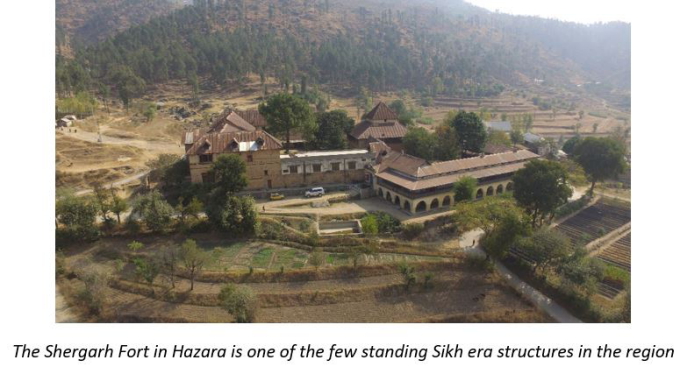
It’s important to clarify that despite his robust military presence, Nalwa’s control was never established in all of Hazara. Local sources and the Umdat Ut Tawarikh ascertain that Painda Khan Tanoli, based in the Trans-Indus Tanawal belt, continued to be a source of disturbance to Nalwa throughout the 1830s – launching prominent attacks on the Lahore Durbar’s forces in Mansehra, Kiriplian, Qadirabad, Shergarh, Parhena, Bhirkund, Nilore, Agror and Bharukot. As late as 1836, the Umdat ut Tawarikh mentions that Maharaja Ranjit Singh was annoyed with Nalwa “for in spite of that fact that there were 8,000 horse and foot with the Sardar, the affair of Painda Khan had not yet been over” (17). Our elders told us that control of the Shergarh Fort, which was built by Diwan Bhawani Das in 1819 and is currently in custody of my family, changed hands seventeen times between Painda Khan and the Sikh Empire between 1824 and 1844.
June 22, 2019
Indus Heritage Club

Published in SikhNet on May 29, 2019 by Indus Heritage Club founder Jahandad Khan
The most enduring landmark of Sardar Hari Singh Nalwa’s legacy in Pakistan is the country’s western border with Afghanistan, which also once represented the furthest limits of the Sikh empire. However, it was in the Hazara region in today’s Khyber Pakhtunkhwa province that Nalwa spent the bulk of his time on the frontier. Although local history sources contain a wealth of information on Hari Singh Nalwa’s fifteen-year tenure as Governor of Hazara, they have not received adequate scholarly attention. Foremost among these is the remarkable Tawarikh-e-Hazara. This book was penned in Persian in 1846 by Lala Mehtab Singh, who hailed from Musanagar (Kanpur) and joined Nalwa’s service in Hazara in 1824. As my ancestor Painda Khan Tanoli, of Amb-Darband in Hazara, was a contemporary and prominent rival of Nalwa, our elders also passed down rich oral and written traditions that shed light on the towering figure of nineteenth century South Asian history whose legacy on the frontier is often misunderstood. It is my earnest desire to see these local narratives from Hazara added to existing knowledge of Nalwa in an objective manner, before they fade away from memory and relevance.
The Political Economy of Conflict in Hazara
Hazara occupied a strategically important position at the beginning of the early nineteenth century, as the Durrani Afghans crossed the Indus and used routes through Hazara to access the wealth of Kashmir. Therefore, control of Hazara became increasingly important to Maharaja Ranjit Singh’s Lahore Durbar as it attempted to take control of Kashmir away from the Durranis. This was bad news to the native tribes of the region who were used to maintaining their political autonomy. Both the Sikhs and Durranis experienced turbulence with the locals. In 1817, my ancestor Nawab Khan Tanoli was killed by Azim Khan Durrani, the Afghan Governor of Kashmir, for challenging Durrani authority in the region (1). Around the same time, Southern Hazara under the leadership of Muhammad Khan Tareen rebelled against growing Sikh control. Muhammad Khan Tareen was a distant ancestor of Pakistan’s first military dictator, General Ayub Khan, and a powerful chief who had formerly collected taxes from the region and paid them to the Sikh Empire’s agents at Attock Fort. The cause for the rebellion was an increase in annual tax demands from 5,000 to 25,000 Rupees (2).
To alleviate the resistance against the Lahore Durbar, Ranjit Singh’s crafty mother in law Mai Sada Kaur visited Hazara in 1818 with Sher Singh and a military contingent of 300 men from Lahore headed by Illahi Baksh (3). They built a fort at Tarbela in Hazara; Mai Sada Kaur adopted Muhammad Khan Tareen as her son and Maharaja Ranjit Singh later convinced him to accept a jagir of Rs. 20,000 to maintain peace in the region (4). Despite the efforts towards reconciliation with Hazarawal political elites, several notable Sikh officers like Makhan Singh, Diwan Ram Diyal and Amar Singh Majithia fell at the hands of local tribal chiefs who resented their decreasing autonomy (5).
The historian Hari Ram Gupta crudely assessed that conflict in Hazara was driven by “the religious zeal and bigotry” of the natives (who he incorrectly identifies as Yusufzai Pashtuns) (6). However, the above chain of events identifies excessive taxation and loss of political autonomy to both Durranis and Sikhs as the realistic drivers of conflict.
Nalwa’s Military Campaign in Hazara
Maharaja Ranjit Singh appointed Nalwa the Jagirdar-Governor of Hazara in 1822 following the latter’s decisive victory in an unplanned battle where the odds were heavily stacked against Nalwa. In 1821, Nalwa was rushing from Kashmir to Mankera when his forces were intercepted in Hazara. A large body of Jadun tribesmen had blocked the narrow pathway at Mangal, on the outskirts of modern-day Abbottabad, and demanded Pashmina shawls in return for right for passage. Hari Singh Nalwa sent Najeebullah Khan Swati and Lala Raj Kunwar to negotiate with the tribesmen on his behalf three times (7). After three failed attempts through the local intermediaries, Nalwa took the fort at Mangal by storm. Local records mention that the Sikh forces that scaled the walls of the Mangal Fort at dawn were headed by an Iqbal Singh who displayed exemplary courage. The defeated tribesmen sent delegations of local Hindus and Sikhs from Nawanshehr and Dhamtor in Hazara to parley with Nalwa on their behalf. Nalwa permitted the Jaduns to resettle in their captured territory on the condition that each house in Nawanshehr, Dhamtor and Rajoyya pay five and a half rupees as fines for the inconvenience caused (8).
On becoming the Governor of Hazara in 1822, Nalwa built the Harkishangarh Fort a mile east of the city of Haripur, at a strategic location pointed out him by his local Muslim ally Muqaddam Musharraf who was from the Gujjar tribe (9). This would remain the Lahore Durbar’s largest fort in Hazara. However, it would take Nalwa two years to further cement his authority in the region. A series of toughly contested battles took place at Srikot, a mountain retreat of the Mashwani tribe that had become a seat of resistance for chiefs from around Hazara who fell out of favour with the Durbar. In 1824, Maharaja Ranjit Singh himself participated in the Hazara campaign when Nalwa was seriously wounded while attempting to take Srikot from a confederation of local tribes (10).
Control of Hazara was firmly established in 1824 when, on Nalwa’s local ally Muqaddam Musharraf’s advice, the following chiefs were apprehended and blown away from cannons following a battle at Srikot: Bostan Khan Tareen of Dervesh, Sher Muhammad Khan of Saraye Saleh, Saleh Muhammad Mashwani, Saleem Shah Mashwani, Jalal Khan Dilazak of Saraye Saleh and Sheikh Jadun of Rajoya. Srikot was garrisoned by the Sikh empire and the Mashwani tribe was driven out of their mountain range for two years (11). The Mashwanis were only allowed to return when elders of the tribe promised Nalwa that they would not cause further trouble to the Lahore Durbar (12).
After 1824, my ancestor Painda Khan Tanoli of Amb-Darband was the only chief left to continue the resistance in Hazara – a point to note is that he was at war not just with Nalwa but also simultaneously with the Afghan Durranis and Syed Ahmed Barelvi. This explains why Edward Conolly referred to Painda Khan as a “a sort of wild man, at war with all around him,” (13) who would cross the river Indus with his tribal army on inflated goat skins to ambush garrisons built by the regional powers in his native lands. Nalwa was aware that Painda Khan’s father, who was put to death by the Afghan Governor of Kashmir, had as his dying wish made his son swear an oath never to trust an outside ruler. Perhaps sympathetic to his solitary condition, Nalwa made unsuccessful peace overtures to my ancestor no less than five times until his death in Jamrud in 1837 (14).
Nalwa was therefore surprised when he received a letter from the reclusive Painda Khan requesting his assistance against Syed Ahmed Barelvi, an angry preacher from UP who wanted to rally the frontier tribes in Jihad (Holy war) against the Sikh Empire. Barelvi and his men had captured my family’s seat of power at Amb-Darband after my elders’ refusal to become part of their war. Additionally, the strict version of Islam Barelvi preached was at odds with the flexible folk Islam traditionally practiced by local communities.
Hari Singh Nalwa agreed to provide military support against Barelvi in return for Painda Khan sending his eldest son, Jahandad Khan, to Nalwa as a guarantee of good will. Jahandad was a boy of eight years at the time. Interestingly, the exchange between the two rivals making common cause against Barelvi was preserved as poetry by local bards. Syed Murad Ali Aligharhi translated the folk poetry into Urdu in the 1870s (15). An excerpt from his translation is as follows:
Barelvi’s forces were driven out of Amb-Darband with the help of the Sikh reinforcements. The alliance was short lived as the old differences between Nalwa’s lieutenant Mahan Singh and Painda Khan Tanoli soon resurfaced, and they were back to skirmishing (16). This also meant that the eight-year-old Jahandad Khan spent a few years in Nalwa’s custody before he was able to rejoin his family.
It’s important to clarify that despite his robust military presence, Nalwa’s control was never established in all of Hazara. Local sources and the Umdat Ut Tawarikh ascertain that Painda Khan Tanoli, based in the Trans-Indus Tanawal belt, continued to be a source of disturbance to Nalwa throughout the 1830s – launching prominent attacks on the Lahore Durbar’s forces in Mansehra, Kiriplian, Qadirabad, Shergarh, Parhena, Bhirkund, Nilore, Agror and Bharukot. As late as 1836, the Umdat ut Tawarikh mentions that Maharaja Ranjit Singh was annoyed with Nalwa “for in spite of that fact that there were 8,000 horse and foot with the Sardar, the affair of Painda Khan had not yet been over” (17). Our elders told us that control of the Shergarh Fort, which was built by Diwan Bhawani Das in 1819 and is currently in custody of my family, changed hands seventeen times between Painda Khan and the Sikh Empire between 1824 and 1844.






